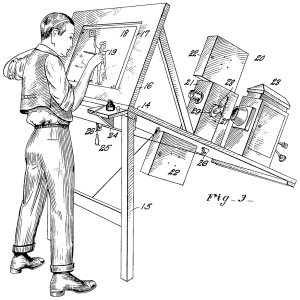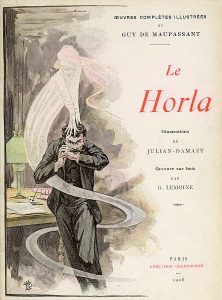
 Written by Maria-Elizabeth Baeva, MSc, Jefferies Lab alum (left)
Written by Maria-Elizabeth Baeva, MSc, Jefferies Lab alum (left)
Edited by Sarah Bowers, PhD Student, Brown Lab at BC Children’s Hospital Research Institute (right)
This is the second blog in a two-part series about the relationship between arts and science, and why the two fields need each other. Read the first blog in the series, “The Tensegrity of Art and Science (Part 1): Why Science Needs Art”.
In 2010, Dr. Joseph Chiro, a professor of curriculum and instruction in the School of Education at Long Island University, published an article titled “Going From STEM to STEAM1”. In his piece, Dr. Chiro argues the arts should be included in the acronym STEM (science, technology, engineering, and mathematics) for economic reasons. He claims that allowing the arts access to funds normally reserved for STEM disciplines and research would render America more competitive in the global marketplace. Indeed, a place for the arts in traditional STEM education is being increasingly recognized, including at our local Science World, which hosts the annual Girls and STEAM event2.
Some skeptics remain hesitant to include the arts under the umbrella of STEM, perhaps out of fear of shifting priorities from scientific domains or owing to perceived challenges in maintaining subject-specific standards. However, I believe that these disciplines are reliant on each other. Dr. Chiro himself points out that the ancient Greeks did not distinguish between the arts and science. In Part 1 of this series, I described why science needs the arts. This time, I will discuss the influence that scientific discovery has on the arts.

A patent drawing of an original rotoscope. Rotoscopes were used to make early animations by tracing over live-action footage frame by frame. Although the rotoscoping technique is still used today, scientific advances mean that it is predominantly done on computers. Image from Wikimedia Commons.
How do scientific advancements impact the arts?
Following the invention of photography in the 1820s, there was an explosion of new art forms, particularly in the visual arts like cinema. The transition from the early rotoscoped animations of the 1900s to the first full-length 3D animated movie in 1995 (Toy Story) is a striking example of how technological innovations allowed animated movies to change drastically in less than a hundred years. Another example of advancements in technology affecting how we consume and produce art can be seen in the music industry3, 4, 5. It was 1877 when Edison first revealed the phonograph and subsequent iterations over the following decades improved the quality of recorded sound. Vinyl records invented in 1948 were replaced by CDs in the 1980s6, 7, 8. The latter were more portable, less likely to break, and could hold up to 97 minutes of music on one disc9! More recently, streaming has effectively wiped out the need for physical objects that hold audio10. Today, innovations continue in other art domains, including the multibillion-dollar video game industry, which requires cooperation from audio engineers, software developers, and computer programmers with artists, writers, designers, and actors. Video games have also taken art in a new direction by embracing interactivity and responsiveness as components critical to their success.
Scientists play an important role in conservation and restoration, where they develop techniques that can be used to preserve everything from paintings to entire buildings. Unfortunately, countless works of art have been lost throughout time as a result of decay. The Last Supper fresco, for example, lasted less than 20 years because Leonardo da Vinci used an experimental oil-based medium on drywalls and not the traditional egg-tempera on moist plaster11, 12. Thankfully, chemical advancements have generated tools that can be used to try to repair and restore precious works of art like The Last Supper13. Another example of science protecting the arts was Louis Pasteur’s discovery of a way to treat two diseases affecting silkworms – flacherie and silkworm nosema disease – which saved the silk textile industry14.
From protecting objects to protecting society itself, science has always been critical for increasing our quality of life. Although we have had art for as long as humanity itself, there is no doubt that scientific advancements related to human wellbeing, including sanitation, medical treatments, vaccines, and increased agricultural/consumable output have allowed humanity as a whole to live longer and more comfortably. Thus, we can dedicate more time and resources to pursuing artistic endeavors for many generations to come.

The 1908 cover of Guy de Maupassant’s fantasy story, Le Horla. The story describes a man who loses his sanity as an “invisible Being” takes over his mind. This was at a time when researchers in the fields of microbiology, neurology, and psychiatry were working to understand conditions such as neurosyphilis. Image from Wikimedia Commons.
How does science inspire art?
Art reflects society’s attitudes, ideas, and beliefs regarding science. It is said that Mary Shelley was partially inspired to write Frankenstein after having nightmares about experiments used to reanimate non-functioning limbs using electricity15, 16, 17. Interestingly, the movie adaption of this book has been cited as inspiration for the first wearable pacemaker, created over 150 years later. Frankenstein is now considered one of the founding works of the science fiction genre, which takes inspiration from real-world innovations, and imagines how society will look in the future with new technologies18, 19.
Even before science fiction, the fantastic genre (not to be confused with fantasy) combined elements of horror and the supernatural and was also heavily inspired by the science of its time. During the late 1800s and early 1900s, for example, the fields of microbiology, neurology, and psychiatry were beginning to be more researched. The short story Le Horla by Guy de Maupassant describes a man who becomes insane as an “invisible Being” takes over his mind20, 21. The story makes several allusions to “the Being” coming from abroad and being contagious. Notably, neurosyphilis, a common affliction of the time caused by the bacterium Treponema pallidum, has paranoia as one of its main symptoms22. Maupassant and his brother would eventually go on to die from this illness. In more modern times, space exploration has become a favorite topic in cinema. From Stanley Kubrick’s 2001: A Space Odyssey to Andrei Tarkovsky’s Solaris and Christopher Nolan’s Interstellar, the increased sophistication of special effects combined with our ability and desire to explore the universe gives us no shortage of inspiration for creating stories that go beyond this earth23, 24, 25, 26, 27.
Two colliding worlds
I hope that I have impressed upon you the truly reciprocal, cyclical, and codependent relationship between the arts and the sciences. There is no shortage of examples of brilliant minds demonstrating talent across both. To give just two examples, Leonardo Da Vinci not only painted the famous Mona Lisa but was also a prolific engineer and inventor while Vladimir Nabokov not only wrote Lolita but was also an expert lepidopterist29, 30, 31, 32, 33.
“… I would like to propose a radical idea: science majors should be required to take an art minor and art majors should be required to take a science minor. I feel that diversity, academically and intellectually, will not only help both disciplines progress into bold new directions, but also help us appreciate knowledge in all of its forms.” — Maria-Elizabeth Baeva
So, to the “science majors who might consider the arts intangible or abstract”, and the “art majors who argue that the sciences are boring or uninspiring”, I would like to propose a radical idea: science majors should be required to take an art minor and art majors should be required to take a science minor. I feel that diversity, academically and intellectually, will not only help both disciplines progress into bold new directions, but also help us appreciate knowledge in all of its forms.
- Read the first blog in the series, “The Tensegrity of Art and Science (Part 1): Why Science Needs Art”.
- Interested in how the arts and science collide at the CBR? Check out our Girls and STEAM video on “Synthetic Biology: Using DNA for New Applications”
Sources
1 Piro, Joseph M. “Going From STEM to STEAM” Education week, 9 March 2010, https://www.edweek.org/teaching-learning/opinion-going-from-stem-to-steam/2010/03
2 “Girls and STEAM” Science World, Accessed June 19 2021, https://www.scienceworld.ca/girls-and-steam/
3 Ensch, Sean “A Brief History of Photography” Iceland Photo Tours, Accessed June 19 2021, https://iceland-photo-tours.com/articles/landscape-and-nature-photography/a-brief-history-of-photography
4 “The trick that made animation realistic”, YouTube, Vox, 3 December 2019, https://www.youtube.com/watch?app=desktop&v=IS1hCSsmH1E
5 “How are Characters Animated at Pixar? – Toy Story Behind the Scenes”, YouTube, Many Jony, 23 October 2017, https://www.youtube.com/watch?app=desktop&v=5TqPl3MSSow
6 “History of the Cylinder Phonograph” Library of Congress, Accessed June 20 2021, https://www.loc.gov/collections/edison-company-motion-pictures-and-sound-recordings/articles-and-essays/history-of-edison-sound-recordings/history-of-the-cylinder-phonograph/
7 “Back in Time- A Brief History of the Vinyl Record” Disc Manufacturing Services, 6 September 2017, https://www.discmanufacturingservices.com/blog/post/back-in-time-a-brief-history-of-the-vinyl-record
8 “History of the CD: 40 years of the compact disc”, BBC News, 11 March 2019, https://www.bbc.co.uk/newsround/47441962
9 Alfred, Randy “Dec. 16, 1770: Beethoven’s Birth in Bonn Leads to Longer CDs”, Wired, 16 December 2010, https://www.wired.com/2010/12/1216beethoven-birthday-cd-length/
10 Knopper, Steve “The End of Owning Music: How CDs and Downloads Died” Rolling Stone, 14 June 2018, https://www.rollingstone.com/pro/news/the-end-of-owning-music-how-cds-and-downloads-died-628660/
11 The Museum of the Cenacolo Vinciano, Accessed 20 June 2021, https://cenacolovinciano.org/
12 Bradshaw, Aoife “A Fine Line: Restoring Leonardo da Vinci’s The Last Supper” Walks of Italy, 11 November 2019, https://www.walksofitaly.com/blog/art-culture/leonardo-da-vinci-last-supper-restoration
13 “The Science Behind the Restoration of a Painting” Invaluable.com, 29 May 2019, https://www.invaluable.com/blog/the-science-behind-art-restoration/
14 “Louis Pasteur” Wikipedia, Wikimedia Foundation, 10 June 2021, https://en.wikipedia.org/wiki/Louis_Pasteur
15 “Mary Shelley” Wikipedia, Wikimedia Foundation, 5 June 2021, https://en.wikipedia.org/wiki/Mary_Shelley
16 Shelley, Mary “The Project Gutenberg eBook of Frankenstein, by Mary Wollstonecraft (Godwin) Shelley” Project Gutenberg, 13 November 2020, https://www.gutenberg.org/files/84/84-h/84-h.htm
17 Cohen, Jon “The Horror Story That Haunts Science” Science, 10 January 2018, https://www.sciencemag.org/news/2018/01/specter-frankenstein-still-haunts-science-200-years-later
18 Rhees, D. J. “From Frankenstein to the pacemaker” IEEE Engineering in Medicine and Biology Magazine 28(4): 78-84, July-August 2009, doi: 10.1109/MEMB.2009.933571.
19 Tymn, Marshall B. “Science Fiction: A Brief History and Review of Criticism.” American Studies International 23(1): 41-66, April 1985, JSTOR, www.jstor.org/stable/41278745
20 de Maupassant, Guy “The Horla” East of the Web, Accessed June 20 2021, http://www.eastoftheweb.com/short-stories/UBooks/Horl.shtml
21 “Guy de Maupassant” Wikipedia, Wikimedia Foundation, 19 June 2021, https://en.wikipedia.org/wiki/Guy_de_Maupassant
22 Healthwise Staff “Neurosyphilis” HealthLink BC, 7 July 2019, https://www.healthlinkbc.ca/health-topics/hw195457
23 “Stanley Kubrick” Wikipedia, Wikimedia Foundation, 15 June 2021, https://en.wikipedia.org/wiki/Stanley_Kubrick
24 “2001: A Space Odyssey – Trailer”, YouTube, Warner Bros. Pictures, 19 April 2018, https://www.youtube.com/watch?app=desktop&v=oR_e9y-bka0
25 “Andrei Tarkovsky” Wikipedia, Wikimedia Foundation, 20 June 2021, https://en.wikipedia.org/wiki/Andrei_Tarkovsky
26 “Tarkovsky’s Solaris (Trailer) – coming Nov. 30 | Austin Film Society” YouTube, Austin Film Society, 28 November 2018, https://www.youtube.com/watch?app=desktop&v=BBYJH6UAAfw
27 “Christopher Nolan” Wikipedia, Wikimedia Foundation, 17 June 2021, https://en.wikipedia.org/wiki/Christopher_Nolan
28 “Interstellar – Trailer – Official Warner Bros. UK” YouTube, Warner Bros. UK & Ireland. 16 May 2014, https://www.youtube.com/watch?app=desktop&v=zSWdZVtXT7E
29 “Leonardo da Vinci” Wikipedia, Wikimedia Foundation, 20 June 2021, https://en.wikipedia.org/wiki/Leonardo_da_Vinci
30 da Vinci, Leonardo “Mona Lisa” Google Arts & Culture, Accessed June 20 2021, https://g.co/arts/cWkyFtdLQfKzdk5N8
31 “Vladimir Nabokov” Wikipedia, Wikimedia Foundation, 19 June 2021, https://en.wikipedia.org/wiki/Vladimir_Nabokov
32 “Lolita” Wikipedia, Wikimedia Foundation, 12 June 2021, https://en.wikipedia.org/wiki/Lolita
33 “Lepidopterology” Wikipedia, Wikimedia Foundation, 16 June 2021, https://en.wikipedia.org/wiki/Lepidopterology


